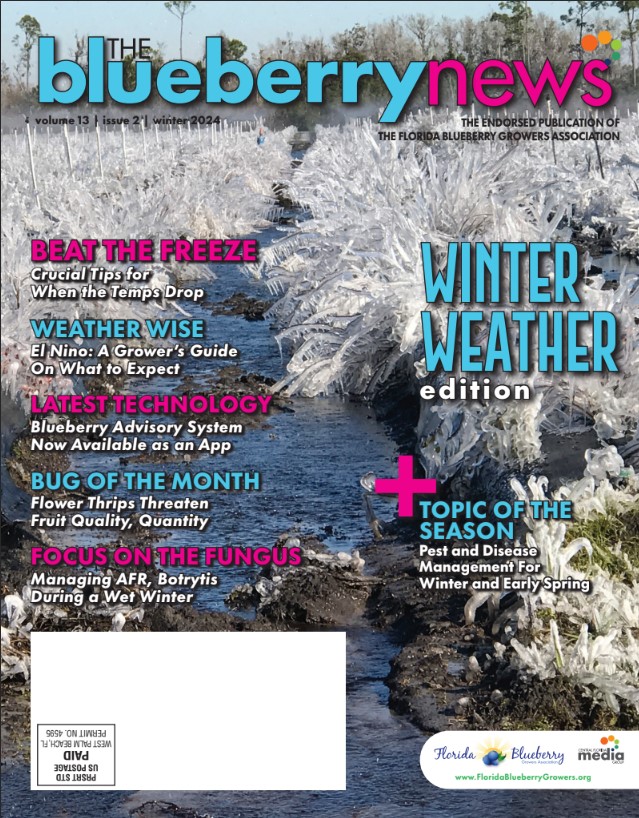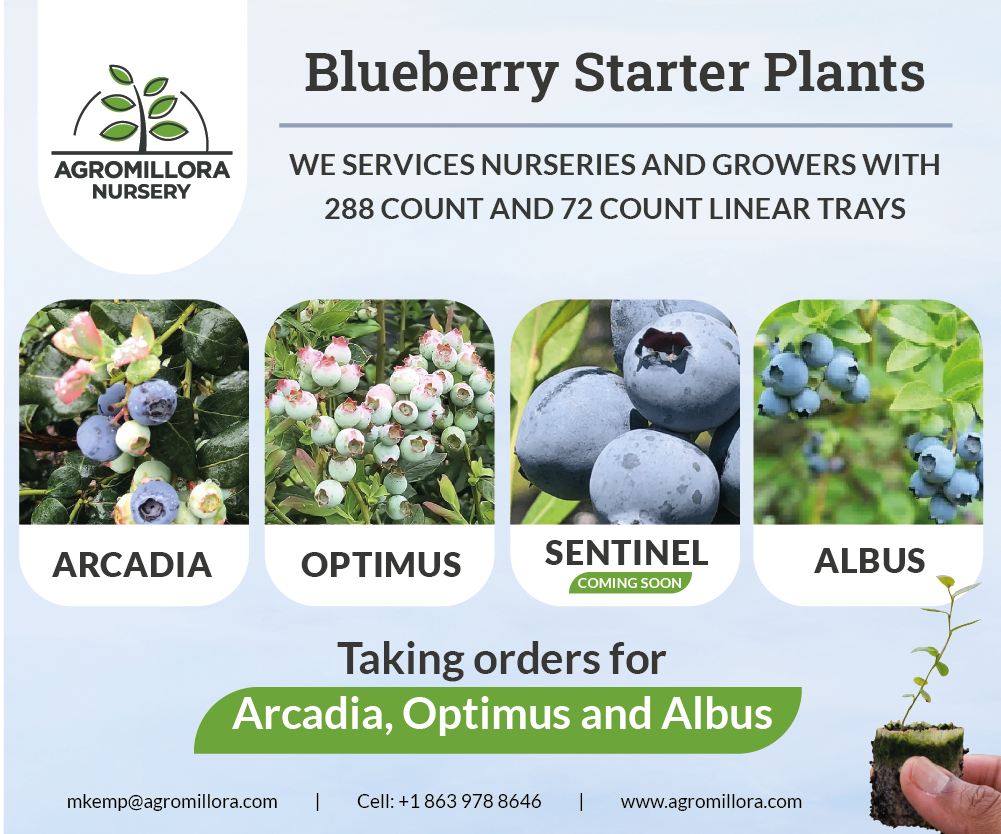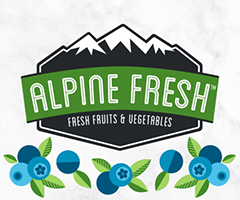The table below lists suggested blueberry management items for spring and early summer. Suggested management items for the entire calendar year are available in an EDIS publication, Calendar for Southern Highbush Blueberry Management in Florida (https://edis.ifas.ufl.edu/publication/HS1363). Specific disease, insect, and weed controls are listed in the 2022 Florida Blueberry IPM Guide (https://edis.ifas.ufl.edu/publication/HS380), as well as in subject-specific publications referenced below. Also, a list of all UF EDIS blueberry publications can be found at www.blueberrybreeding.com/blog, along with a summary description and link to each.
- Home
- About Us
- Hall of Fame
- UF/IFAS Blueberry Extension
- Blueberry Fans
- Grower
- Contact Us





